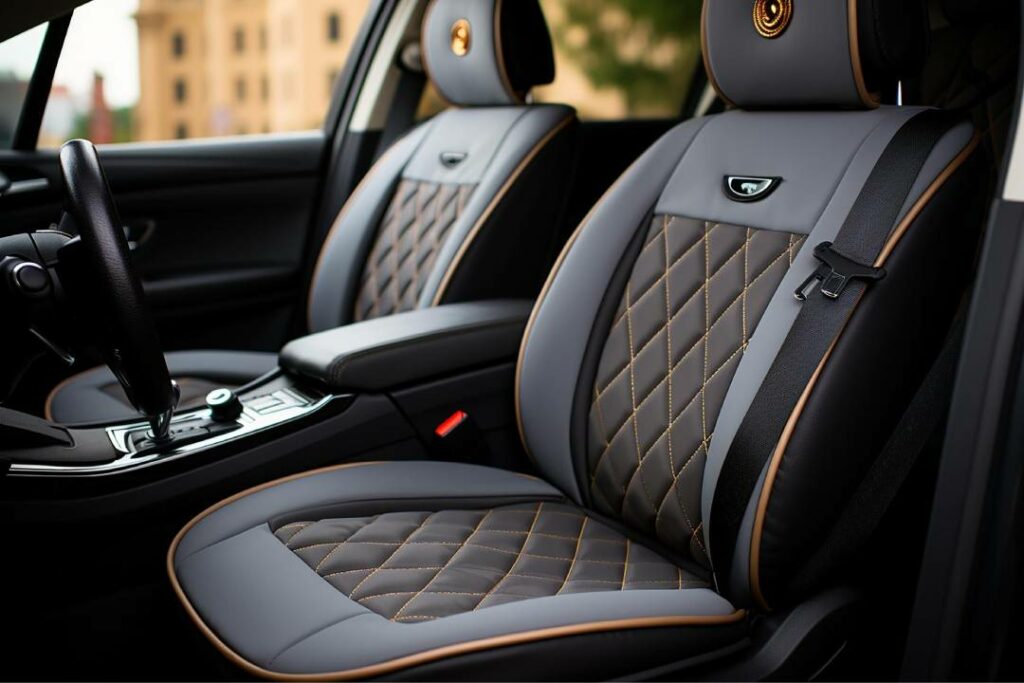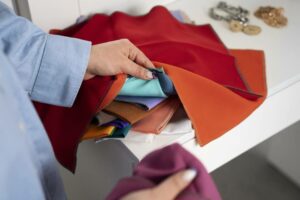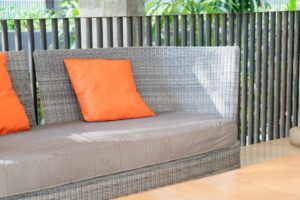In automotive design, the search for materials that blend luxury with functionality has led to the adoption of various innovative fabrics, one of which is Alcantara.
It stands out as a preferred choice for high-end vehicle interiors due to its luxurious suede-like texture and ease of maintenance.
But what exactly is Alcantara, and why has it become synonymous with luxury and performance in automotive design? Continue reading to learn more!
What is Alcantara?

Originating in the early 1970s, Alcantara was the brainchild of Miyoshi Okamoto, a Japanese scientist.
This unique material is a blend of polyester and polyurethane, engineered to mimic the soft, luxurious feel of suede.
Its application spans across various surfaces within the automotive industry, including seats, dashboards, and other interior facets, primarily gracing the interiors of luxury automobiles.
What’s more, the appeal of Alcantara lies not just in its tactile pleasure but also in its durability, stain resistance, and overall comfort.
What are the Benefits of Alcantara in Automotive Design
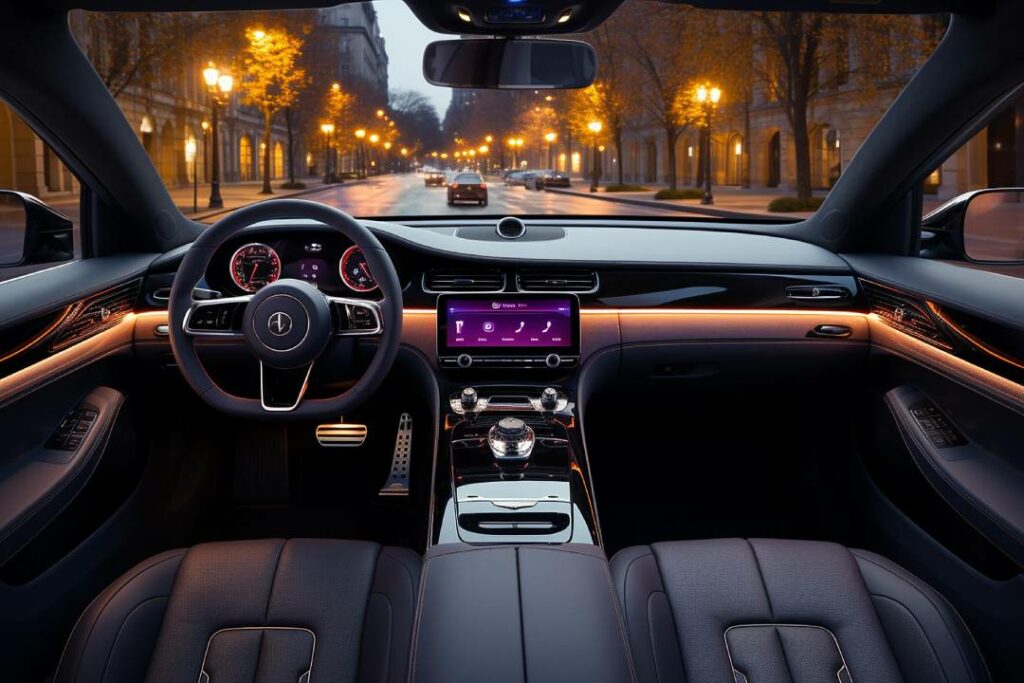
1. Luxurious Texture & Premium Feel
One of the most striking benefits of Alcantara in automotive design is its luxurious texture, and the premium feel it offers.
Mimicking the softness and elegance of suede, Alcantara provides a tactile experience that is both inviting and sophisticated.
This material adds a touch of class and opulence to car interiors, significantly enhancing the aesthetic appeal and comfort level.
2. Durability & Resistance to Wear
Beyond its visual and tactile appeal, Alcantara is engineered for exceptional durability and resistance to wear.
Its resilience is particularly beneficial in high-traffic areas of a car’s interior, such as seats and steering wheels, which are subject to frequent and intensive use.
3. Stain Resistance & Ease of Maintenance
Alcantara is not just about aesthetics; it also offers remarkable stain resistance, making it an excellent choice for automotive upholstery.
Whether it’s a dropped coffee or muddy footprints, spills can be wiped quickly without leaving lasting marks, ensuring that the car’s interior remains pristine.
4. Breathability & Comfort
Comfort is paramount in automotive design, and Alcantara contributes significantly to this aspect through its breathability.
Unlike some synthetic materials that can trap heat and moisture, leading to discomfort during long drives, Alcantara allows air to circulate, maintaining a comfortable temperature.
5. Customisation Options in Design & Colour
Furthermore, Alcantara offers extensive customisation options, allowing car manufacturers and owners to tailor the interior design to their specific tastes and preferences.
With a variety of colours and designs available, Alcantara can be adapted to fit any aesthetic, from sleek and modern to traditional and elegant.
6. Eco-Friendly Choice
In a time when environmental awareness is increasingly essential, Alcantara presents an eco-friendly alternative to traditional automotive upholstery materials like leather.
This is because the fabric’s production process has a lower environmental impact than the processes involved in leather manufacturing, which can be resource-intensive and polluting.
As a result, by choosing Alcantara, car manufacturers and consumers can contribute to reducing the automotive industry’s ecological footprint.
Read More: Synthetic Leather: An Alternative to Animal Leather
Alcantara vs Leather: Which is Best for Automotive Interiors?
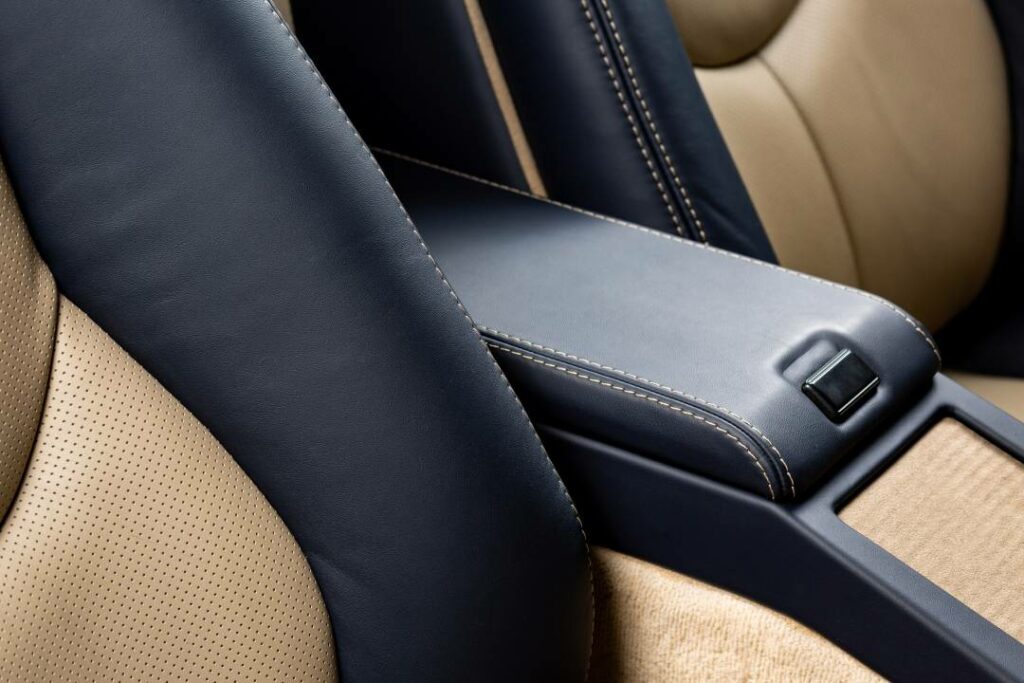
When it comes to automotive interior design, choosing between Alcantara and leather is a significant decision that influences not just the aesthetic appeal but also the comfort of a vehicle.
Here’s a detailed comparison to help determine which material might be the best fit for automotive interiors.
1. Practicality
Alcantara stands out for its practical benefits, particularly its stain resistance and ease of maintenance, making it an ideal choice for vehicles in diverse climates.
This material is adept at handling the spills and stains that come with everyday use, allowing for straightforward cleaning without compromising the interior’s appearance.
On the other hand, while high-quality leather also boasts durability, it requires more attentive care and conditioning to maintain its resilience and prevent signs of wear and tear.
2. Climate Adaptability
The breathability of Alcantara offers a significant advantage in hot and humid climates, where regulating temperature and moisture within the vehicle’s cabin is crucial for comfort.
In contrast, with its less breathable nature, leather might be preferred in temperate regions where the climate is milder and more stable.
3. Cost Considerations
From a cost perspective, Alcantara presents itself as a premium yet more accessible option compared to the high-end leather typically used in luxury vehicles.
This makes Alcantara an attractive choice for manufacturers and designers looking to offer a luxurious feel and appearance without the steep price tag associated with top-tier leather.
How to Clean & Maintain Alcantara Fabric
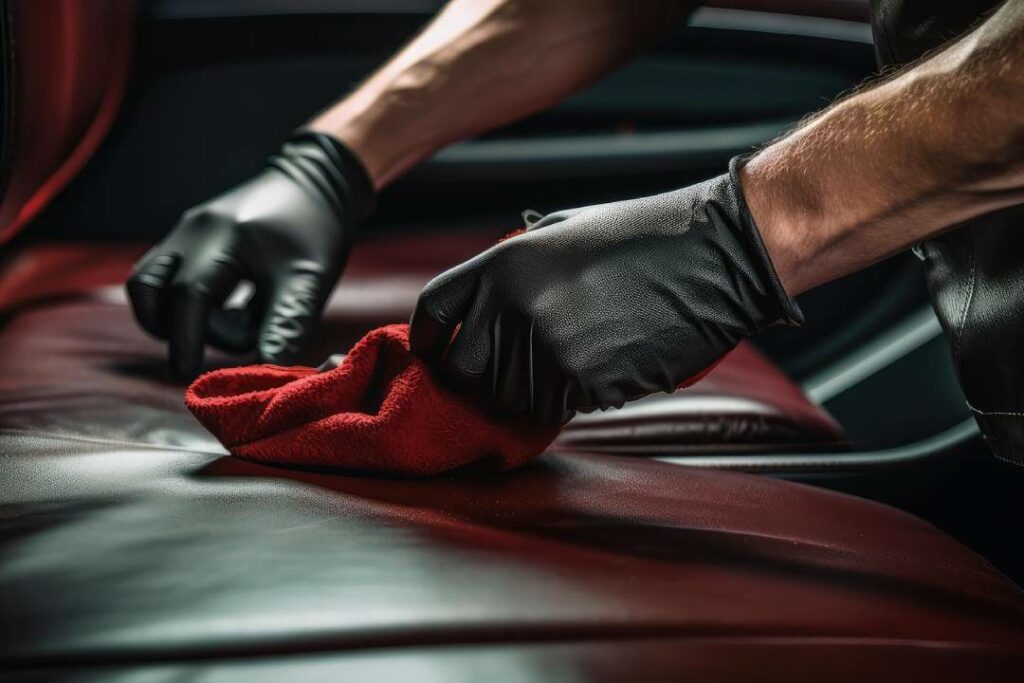
Maintaining the pristine condition of Alcantara fabric is essential for preserving its luxurious appearance and tactile quality. Here are some recommended cleaning practices for keeping Alcantara looking its best:
1. Daily Cleaning
For routine maintenance, using a dry cloth, soft brush, or a vacuum cleaner is sufficient to remove dust and surface debris from the fabric.
2. Weekly Cleaning
In addition to daily dusting, it’s beneficial to perform a more thorough cleaning once a week.
After removing surface dust, take a white cotton cloth that’s been slightly dampened with water and gently wipe over the fabric’s surface.
Steer clear of printed absorbent cloths or papers, as they could transfer ink onto the fabric, leading to stains.
3. Yearly Cleaning
For a comprehensive cleaning, it’s advisable to undertake a more in-depth cleaning process annually. Follow these steps for effective yearly maintenance:
- Initial Dusting: Start by carefully dusting the Alcantara to remove any loose dirt and particles.
- Preparation: Dampen a soft cloth or sponge with clean water, making sure it’s not too wet.
- Wring Out Excess Water: Squeeze out the cloth or sponge thoroughly to ensure it’s not dripping.
- Gentle Cleaning: Carefully wipe down the entire surface of the fabric. You may need to repeat this process several times, rinsing the cloth or sponge and wringing it out again.
- Drying: Allow the Alcantara to air dry completely, preferably overnight.
- Texture Restoration: Once dry, brush the material with a soft bristle brush to restore the fabric’s original texture and appearance.
Read More: Car Seat Fabric or Leather Malaysia: Which is Best for You?
Elevate Your Auto Designs with Alcantara
Whether it’s the practicality for daily use, the luxury feel, or the environmental benefits, Alcantara offers a multifaceted advantage.
For manufacturers who prioritise functionality and style, investing in Alcantara is not just worth it. It’s a forward-thinking choice that reflects the evolving demands of today’s automotive market.
Kintex is a reputable supplier of synthetic leather and fabric for car seats in Malaysia, recognising the crucial role that a car’s interior and seating play in delivering comfort to both the driver and passengers.
We offer a variety of car seat materials, including fabric, PU and PVC leather, and vinyl flooring, catering to the diverse needs of the automotive and transportation industry.

